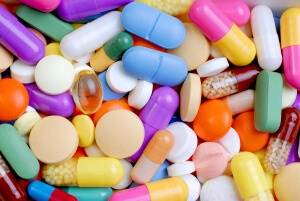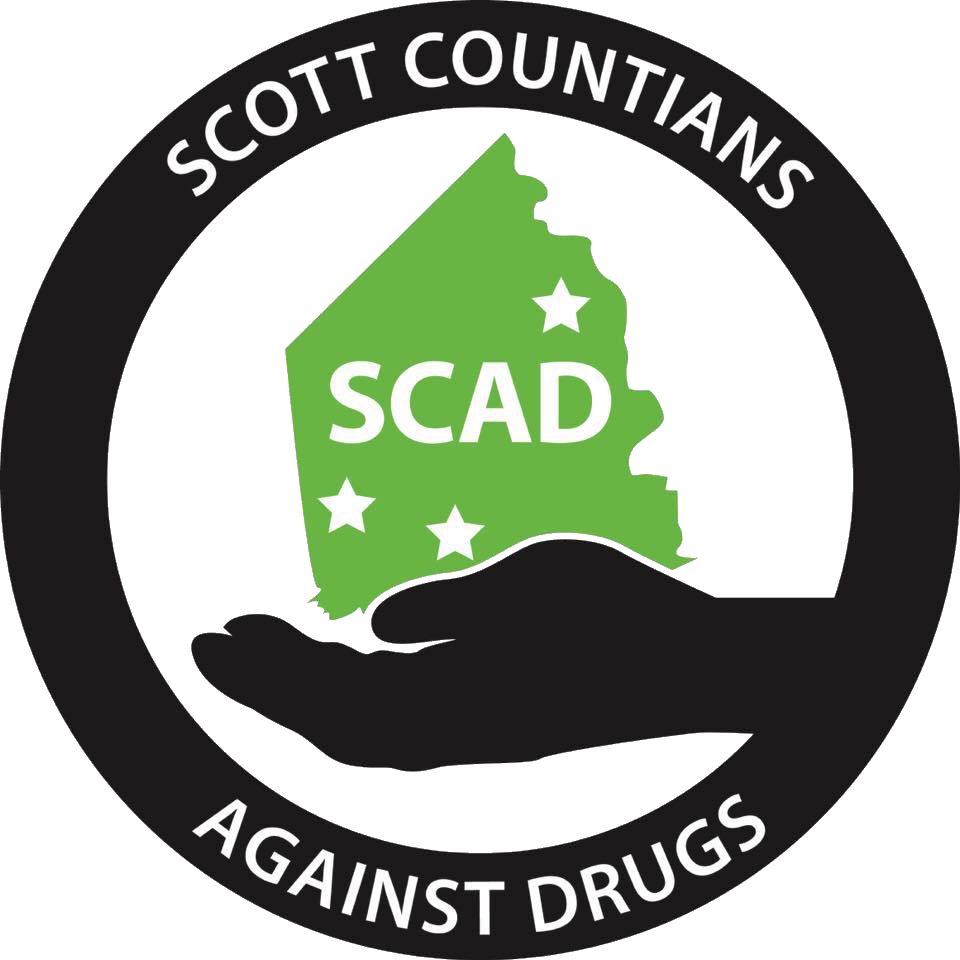The Internet is rife with “safe” and often “legal” ways to get high, or produce mind-altering effects from a number of synthetic, or man-made, materials. Convenience stores and gas stations are selling these substances under the guises of “plant food,” “herbal incense,” “potpourri,” “jewelry cleaner,” and “research chemicals.” These substances are often labeled “not for human consumption” in order to avoid regulation by the U.S. Food and Drug Administration (FDA).
 These products may be regularly abused for their euphoric and psychedelic or psychoactive effects. The issue is that most of these substances are unregulated, manufactured in illegal labs, and often imported from China, or other countries. These drugs may have untested and unpredictable side effects.
These products may be regularly abused for their euphoric and psychedelic or psychoactive effects. The issue is that most of these substances are unregulated, manufactured in illegal labs, and often imported from China, or other countries. These drugs may have untested and unpredictable side effects.
There are literally hundreds of different chemical compounds that may be just slightly altered from a previous form in order to escape regulation or control by the Drug Enforcement Administration (DEA). The Synthetic Drug Abuse Prevention Act, passed in 2012, placed many of the synthetic compounds being abused for their psychoactive effects into Schedule I, meaning that they are illegal in the United States and considered dangerous, potentially addictive, and have no approved medicinal value. The Washington Post reports that more than 500 synthetic, or designer drug, compounds had been identified in 2015. Some of the more popular synthetic drugs include:
- Spice or K2 (also known as Yucatan Fire, Skunk, Blaze, and Bliss): Synthetic cannabinoids, or fake weed, have an active ingredient that is potentially over 100 times more potent than plant-based marijuana, as it more effectively binds to cannabinoid receptors in the brain, Forbes It produces a “high” that is similar to marijuana with depressant and mellowing effects as well as altered perceptions.
- Bath salts: These are synthetic cathinones, which are stimulants, and often include the substances MDPV, methylone, or mephedrone. According to Science Direct, snorting bath salts may be akin to snorting 10 lines of cocaine with just one dose. Heart rate, blood pressure, and body temperature increase as well as focus and energy levels.
- Flakka or gravel: The active ingredient is alpha-PVP, a synthetic cathinone drug with stimulant and hallucinogenic effects. Even a small grain packs a punch. In Florida’s Broward County in the first three months of 2015, there were more than 300 cases of flakka abuse recorded, the Washington Post
- Smiles, 2C-I-NBOMe, and 2C-C-NBOMe: This hallucinogenic drug has similar effects to LSD. CNN reports that even a few salt-sized grains are enough to create a “high.”
- DMT, AMT, Foxy, Nexus, and Blue Mystic: These tryptamines and phenethylamines are psychoactive substances that may produce hallucinations similar to those caused by LSD and mescaline. They may be commonly abused in the club or rave scene, the journal Substance Use & Misuse
- Molly: Supposedly a pure version of ecstasy, or MDMA (3,4-methylenedioxy-methamphetamine), this mind-altering drug distorts the senses and acts as a stimulant, but it is often “cut” with other chemicals. CNN reported that only 13 percent of the Molly seized in New York between 2011 and 2015 actually contained MDMA; other substances such as methylone and MDPV, to name a few, were commonly found instead.
Synthetic drugs may be more potent, unpredictable, and dangerous than many illicit drugs. The American Association of Poison Control Centers (AAPCC) reported that over 7,500 calls were taken for adverse reactions to synthetic cannabinoids in 2015. AAPCC also published that there were 520 exposures to bath salts in 2015. Treatment for synthetic drug abuse will likely include educational and preventative measures as well as therapeutic and potentially pharmacological methods.
Who Abuses Synthetic Drugs?
The Internet has changed the way drugs are obtained and even abused. With the click of a few buttons, these potentially dangerous, and often legal, “research chemicals” can be sent to someone’s doorstep, which seems much safer and easier than seeking out a person peddling drugs in an alley. People are also able to browse drug forums and find new synthetic drugs to try. This may appeal greatly to a young audience.
The journal Social Work Today published that according to AAPCC, 60 percent of their synthetic drug cases involved those 25 and younger. Synthetic drugs, particularly those that act as stimulants and alter perceptions, may be popular at clubs and raves. The journal Addiction Science & Clinical Practice reported that young adults, and primarily males in their mid to late 20s, most commonly use designer drugs. Individuals who are single and with lower income levels may be most prone to designer drug abuse, although these drugs are also popular on college campuses as well.
The Monitoring the Future (MTF) Survey of 2014 reports on drug trends for students in 8th, 10th, and 12th grades. Combined, almost 5 percent of students in these grades reported using synthetic marijuana in the month leading up to the national survey. Synthetic marijuana use was first recorded in 2011. Its use seemed to peak in 2012; according to that year’s MTF Survey, it was the second most commonly abused drug behind only marijuana in surveyed high school seniors, with annual prevalence of use over 11 percent in this demographic. Use seems to have dropped a bit in recent years, possibly due to stricter regulations in place, or it could be that new chemical compounds are being used instead and use of these new products may not be recorded. As illicit laboratories create new synthetic drugs, it becomes difficult for authorities to keep up – not only to ban these substances, but also to record who may be using them and in what quantities. Statistics regarding synthetic drugs are likely a bit skewed and may not be entirely accurate.
Other Drug Types
Addiction to Synthetic Drugs
Some of these drugs distort the senses and cause hallucinations or psychotic side effects as well. Some of the chemical messengers, or neurotransmitters, that the brain uses to send messages throughout the body are interfered with. For example, stimulant drugs like flakka or bath salts may increase norepinephrine levels and stimulate the central nervous system, raising heart rate, respiration, blood pressure, and body temperature, and decreasing a person’s need to sleep and desire to eat while making the person energetic, excitable, and talkative. Spice may have the opposite effect, acting as a central nervous system depressant, slowing down these functions and leaving users mellow and euphoric.
Synthetic drugs are unpredictable, however, and erratic behavior may be common as well. Suicide and self-harming behaviors, violence, aggression, and psychosis, and even heart attacks, seizures, and damage to internal organs, may be potential side effects of synthetic drug abuse, NIDA reports. The risk for overdose on a synthetic or designer drug is high as the chemicals used in their creation may be unknown and may have lethal interactions in a person’s body and brain. Many of these potential side effects are short-term; however, with prolonged and regular use, the physical and chemical changes made to the brain and body may become more ingrained.
When a person spends a significant amount of time figuring out how to get more drugs, using them, and then coming down from the drug’s effects, it is likely due to addiction. Addiction is considered a disease manifested by drug-seeking and compulsive drug-using behaviors. Individuals may no longer be able to control the amount of drugs they are abusing each time, or the time spent abusing them. Responsibilities, pleasure in regular activities, school grades or work production, familial duties, and social interactions may not be attended to properly. Relationships may suffer as individuals battling addiction are likely to be secretive, withdrawn, and prone to erratic behavior and intense mood swings. Sleep patterns and regular eating habits may seem out of the ordinary, and those addicted to synthetic drugs may have significant changes in weight and a disregard for personal hygiene. Even though synthetic drugs may not always show up on a drug test, behavioral and social changes may be evidence enough that addiction treatment is necessary
Treating Addiction to Synthetic Drugs
Since many synthetic drug compounds may be relatively unknown, or the specific drug being abused may not be readily identifiable, a residential treatment program may provide comprehensive care to ensure each individual’s personal safety and security. Residential treatment centers can provide 24-hour medical monitoring and mental health care so self-harming or suicidal tendencies, that may be side effects of acute intoxication or synthetic drug withdrawal, can be averted and controlled.
Motivational Interviewing (MI) is a type of behavioral therapy that is often useful to help individuals who may not have the initial internal motivation to seek change on their own. MI can help these individuals to recognize that change is necessary, through nonconfrontational and nonjudgmental methods. Behavioral therapy can improve a person’s self-esteem and feelings of self-worth while teaching healthy stress coping mechanisms and communication tools, thus helping to prevent relapse.
Withdrawal and Detox Timeline for Synthetic Drugs
As there are many different types of synthetic drugs, withdrawal side effects and detox timelines vary as well. As a general rule, detox typically takes 5-7 days. Medical detox in a specialized facility that can provide around-the-clock medical monitoring of vital signs and onsite mental health professionals to keep individuals from harming themselves and others is the safest method of detox.
For hallucinogens, medical detox may mean that the individual is placed in a dark, quiet, and safe environment with little stimulation in order to “come down” from the drug’s effects and avoid further psychotic episodes. Some drugs may have more intense withdrawal symptoms than others, and medications may be helpful to counteract these symptoms during medical detox. Typically, physical stabilization is the initial goal of detox, and this may be accomplished after the drug is fully, and safely, removed from the bloodstream via detox. Detox is considered a piece of the treatment puzzle that will also include therapies, counseling, support groups, education, and relapse prevention techniques as well.

